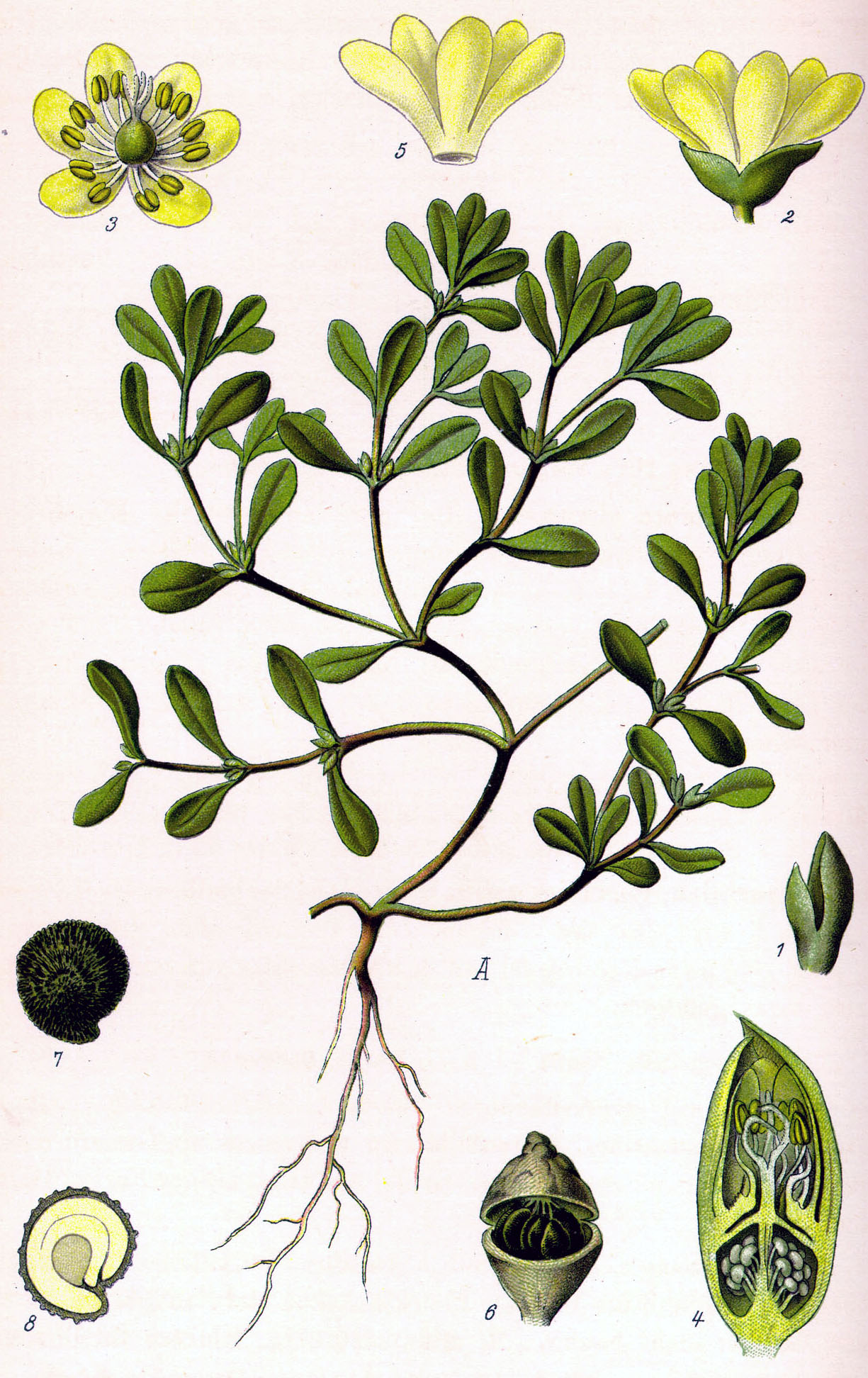Dies ist eine alte Version des Dokuments!
Portulaca oleracea L. - Portulacaceae - 马齿苋 ma chi xian (chin)., purslane, Portulak
Annual succulent herb, up to 40cm high; stems sometimes flushed red or purple; leaves alternate, short petioled, obovate; flower small, yellow.
„Danin et al. (Israel J. Bot. 27: 177–211. 1978) recognized a series of eight subspecies, but they are rather poorly correlated with geography and their status needs re-evaluation. The Chinese material seems to belong to the most common and weedy form placed in subsp. oleracea. There has been some selection of more robust forms for use as a vegetable; these are sometimes placed in subsp. sativa (Haworth). The plants, which are common weeds of cultivation, are eaten as a vegetable and used for medicinal purposes.“
http://www.efloras.org/florataxon.aspx?flora_id=2&taxon_id=200007020
„It has an extensive natural distribution throughout the Old World extending from North Africa through the Middle East and the Indian Subcontinent to Malesia and Australasia. The species status in the New World is uncertain… It is naturalised elsewhere and in some regions is considered an invasive weed.“ http://en.wikipedia.org/wiki/Portulaca_oleracea
„The name Portulaca oleracea L. subsp. sativa (Haw.) Schübl. & G. Martens (Portulaca sativa Haw.) refers to the common cultivar which is more robust and has larger seeds, and which is inseparable from the natural species.“ http://de.wikipedia.org/wiki/Portulak
„Portulaca oleracea L. (POL) has been used as one of the traditional oriental medicines to treat bacteria, virus, antherasis, caducity, diabetes and for enhancing immunity. This study aims at revealing effects of POL on alloxan-induced diabetic rats and its mechanisms… The results indicate that POL would alleviate the blood glucose and lipid rising associated with diabetes, and improve the abnormal glucose metabolism and increase insulin secretion byrestoring the impaired pancrease β cells in alloxan-induced diabetic rats, which suggest that POL has the hypoglycemic potential and could be useful on the diabetes therapy.“
[Study on chemical constituents of Portulaca oleracea]., Yang, Z. J., Zheng, Y. N., Xiang, L., Zhong yao cai= Zhongyaocai= Journal of Chinese medicinal materials, Vol.30(10), 2007, 1248-1250]

